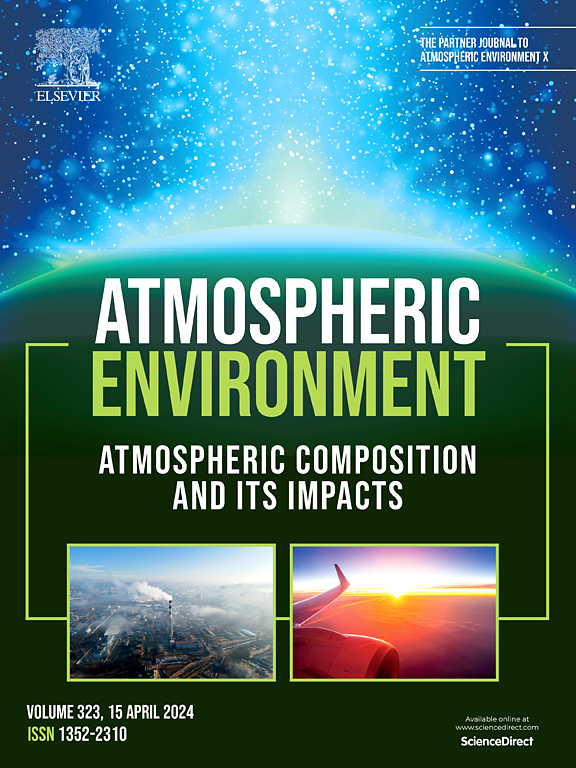Very volatile and volatile organic compounds (VVOCs/VOCs) and endotoxins in the indoor air of German schools and apartments (LUPE10)
IF 4.2
2区 环境科学与生态学
Q2 ENVIRONMENTAL SCIENCES
引用次数: 0
Abstract
People, including sensitive population groups such as children, spend over 90 % of their time indoors and are exposed to volatile and very volatile organic compounds (VOCs/VVOCs) and endotoxins. We measured 34 VVOCs, 69 VOCs, two organic acids, and endotoxins in the indoor air of 34 apartments and 27 classrooms using four different sampling techniques and analytical methods. Our study aimed to provide a comprehensive overview of a broad spectrum of substances rarely measured in indoor air. The following substance classes showed the highest sum medians in classrooms and apartments: alcohols 249 μg/m3 and 518 μg/m3, aldehydes/acetone 81.6 μg/m3 and 121 μg/m3 and organic acids 61 μg/m3 and 82 μg/m3. The individual substances with the highest medians were ethanol > acetic acid > acetone > decamethylcyclopentasiloxane > formaldehyde > acetaldehyde. The median of the total volatile organic compounds as the sum of the VOCs of C6-C16 was 253 μg/m3 (range: 638–3369 μg/m3) in the apartments and 277 μg/m3 (61–900 μg/m3) in the classrooms. The median (95th percentile) levels of endotoxins in the classrooms and apartments were 5.8 EU/m3 (15.3 EU/m3) and 0.26 EU/m3 (0.91 EU/m3), respectively. Concentrations in apartments are significantly lower than in schools. According to current knowledge, levels pose no health risk.
In addition to the classic VOCs, VVOCs should also be measured to a greater extent, as considerable exposure to substances from this group is expected indoors. These results underline the urgent need for further research to improve indoor air quality and protect public health.

德国学校和公寓室内空气中的挥发性有机化合物(VVOCs/VOCs)和内毒素(LUPE10)
人们,包括儿童等敏感人群,90%以上的时间都在室内度过,并暴露于挥发性和极挥发性有机化合物(VOCs/VVOCs)和内毒素。采用四种不同的采样技术和分析方法,对34间公寓和27间教室的室内空气中的34种挥发性有机化合物、69种挥发性有机化合物、两种有机酸和内毒素进行了测量。我们的研究旨在全面概述室内空气中很少测量的广泛物质。教室和公寓的中位数最高的是醇类(249 μg/m3和518 μg/m3)、醛类/丙酮(81.6 μg/m3和121 μg/m3)和有机酸类(61 μg/m3和82 μg/m3)。中位数最高的单个物质是乙醇;醋酸>;丙酮比;decamethylcyclopentasiloxane祝辞甲醛比;乙醛。总挥发性有机物(C6-C16) VOCs和的中位数为公寓253 μg/m3(范围638 ~ 3369 μg/m3),教室277 μg/m3 (61 ~ 900 μg/m3)。教室和公寓的内毒素中位数(第95百分位数)分别为5.8 EU/m3 (15.3 EU/m3)和0.26 EU/m3 (0.91 EU/m3)。公寓的浓度明显低于学校。根据目前的知识,这种水平不会对健康构成威胁。除了经典的挥发性有机化合物外,还应该在更大程度上测量挥发性有机化合物,因为预计在室内会大量接触到这类物质。这些结果强调迫切需要进一步研究,以改善室内空气质量和保护公众健康。
本文章由计算机程序翻译,如有差异,请以英文原文为准。
求助全文
约1分钟内获得全文
求助全文
来源期刊

Atmospheric Environment
环境科学-环境科学
CiteScore
9.40
自引率
8.00%
发文量
458
审稿时长
53 days
期刊介绍:
Atmospheric Environment has an open access mirror journal Atmospheric Environment: X, sharing the same aims and scope, editorial team, submission system and rigorous peer review.
Atmospheric Environment is the international journal for scientists in different disciplines related to atmospheric composition and its impacts. The journal publishes scientific articles with atmospheric relevance of emissions and depositions of gaseous and particulate compounds, chemical processes and physical effects in the atmosphere, as well as impacts of the changing atmospheric composition on human health, air quality, climate change, and ecosystems.
 求助内容:
求助内容: 应助结果提醒方式:
应助结果提醒方式:


